I have two vectors of correlations: one which represents real correlations, and the other permuted correlations (the null distribution). I want to find the correlation value that corresponds to a FDR of 0.05.
Updated approach:
cor_real=rnorm(1000,0,sd=0.2)
cor_null=rnorm(1000,0,sd=0.15)
d_real=density(cor_real,from=max(min(cor_real),min(cor_null)),to=min(max(cor_real),max(cor_null)))
d_null=density(cor_null,from=max(min(cor_real),min(cor_null)),to=min(max(cor_real),max(cor_null)))
# here we ensure that the x values are comparable between the two densities
plot(d_real)
lines(d_null)
Then, to find the correlation value that corresponds to FDR = 0.05, my guess would be:
ratios=d_null$y/d_real$y
d_real$x[which(round(ratios,2)==.05)]
[1] 0.5694628 0.5716372 0.5868581 0.5890325 0.5912069
# this the the correlation value(s) that corresponds to a 5% chance of a false positive
Is this the right approach?
E.g.:
cor_real=rnorm(100,0.25,sd=0.1)
cor_null=rnorm(100,0.2,sd=0.1)
h_real=hist(cor_real,plot=F)
h_null=hist(cor_null,plot=F)
plot(h_null,col=rgb(1,0,0,.5),xlim=c(0,1),ylim=c(0,max(h_real$counts))) # in red
plot(h_real,col=rgb(0,.5,.5,0.25),add=T) # in blue
I think this is when the ratio of the frequencies of the two histograms = 0.05 (null:real), but I'm not 100% sure about that.
How might I find the correlation value that corresponds to FDR = 0.05, having "access" to both the null and real distributions?

